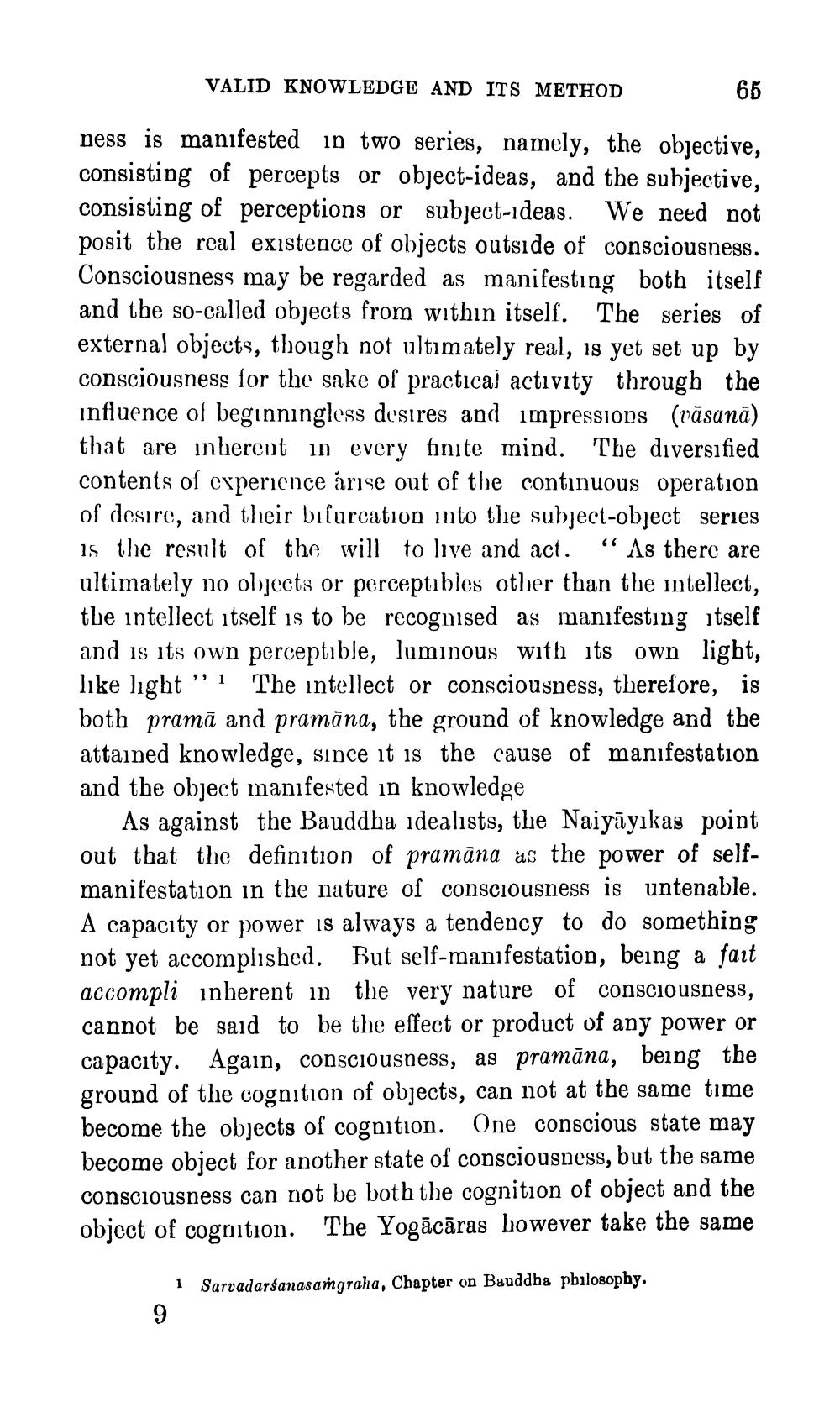________________
VALID KNOWLEDGE AND ITS METHOD
65 ness is manifested in two series, namely, the objective, consisting of percepts or object-ideas, and the subjective, consisting of perceptions or subject-ideas. We need not posit the real existence of objects outside of consciousness. Consciousness may be regarded as manifesting both itself and the so-called objects from within itself. The series of external objects, though not ultimately real, is yet set up by consciousness for the sake of practical activity through the influence of beginningless desires and impressions (vāsanā) that are inherent in every finite mind. The diversified contents of experience arise out of the continuous operation of desire, and their bulurcation into the subject-object series is the result of the will to live and act. “As there are ultimately no objects or perceptibles other than the intellect, the intellect itself is to be recognised as manifesting itself and is its own perceptible, luminous with its own light, lıke light" i The intellect or consciousness, therefore, is both pramā and pramāna, the ground of knowledge and the attained knowledge, since it is the cause of manifestation and the object manifested in knowledge
As against the Bauddha idealists, the Naiyāyikas point out that the definition of pramāna as the power of selfmanifestation in the nature of consciousness is untenable. A capacity or power is always a tendency to do something not yet accomplished. But self-manifestation, being a fait accompli inherent in the very nature of consciousness, cannot be said to be the effect or product of any power or capacity. Again, consciousness, as pramāna, being the ground of the cognition of objects, can not at the same time become the objects of cognition. One conscious state may become object for another state of consciousness, but the same consciousness can not be both the cognition of object and the object of cognition. The Yogācāras Lowever take the same
1 Sarvadarśanasangraha, Chapter on Bauddha pbilosopby.




